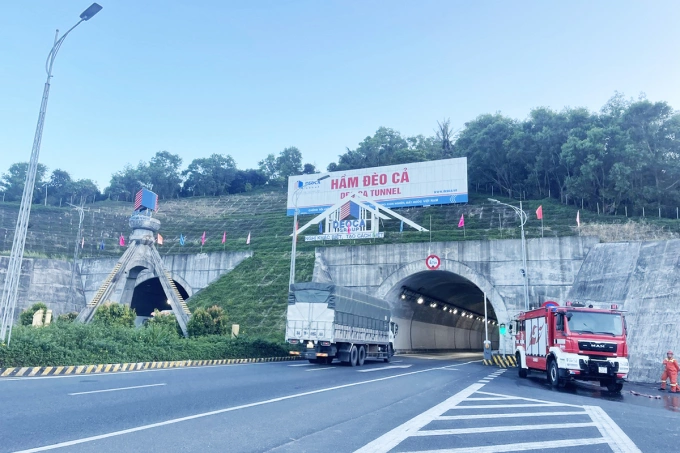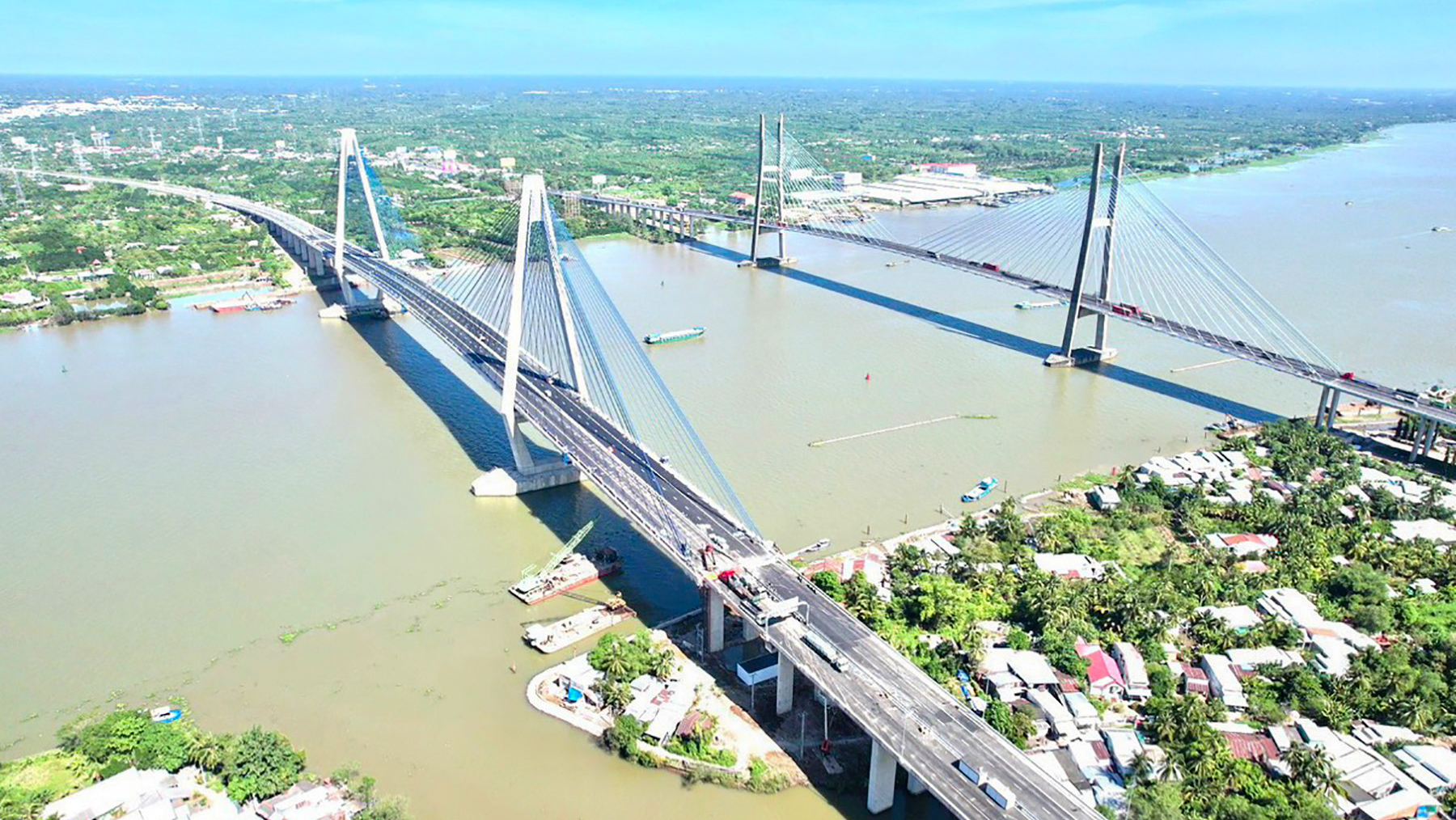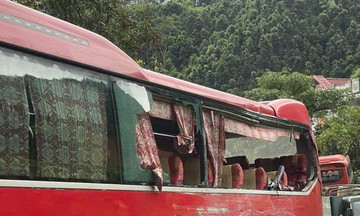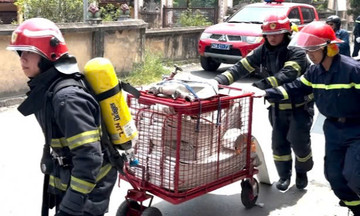Before 1995, Vietnam had several major bridges, such as Chuong Duong and Thang Long, but their design and construction were primarily handled by foreign contractors. Vietnamese engineers and workers were typically involved in simpler tasks or auxiliary supervision.
Tunnel construction experience was mainly limited to 5-6 meter diameter hydroelectric tunnels, using traditional drill-and-blast methods followed by concrete lining. Constructing larger diameter road tunnels through mountains, exceeding 10 meters, was beyond their capabilities. The traditional method often left gaps between the support structure and the rock face after blasting, leading to rock deformation and potential safety hazards.
A turning point came with large-scale infrastructure projects using FDI and ODA from Japan, France, South Korea, and other countries starting in 1995. This allowed Vietnamese engineers to access advanced technologies such as cable-stayed and prestressed concrete bridges, balanced cantilever construction, and new tunneling methods.
Designing and constructing the first cable-stayed bridge
The 6.2 km Hai Van Tunnel (Thua Thien Hue - Da Nang), started in 2000, was the largest tunnel project at the time, primarily constructed by Japanese experts. This marked the first time Vietnamese engineers, including those from Song Da Corporation and Cienco 6, were exposed to the New Austrian Tunneling Method (NATM).
Tran Chung, Chairman of the Vietnam Association of Road Traffic Infrastructure Enterprises, emphasized the importance of their eagerness to learn: "International partners brought modern designs, technologies, and materials; the Vietnamese learned diligently and quickly mastered them," he said.
The inauguration of the My Thuan Bridge on 15/5/2000, then Vietnam's largest double-plane cable-stayed bridge, became an unforgettable moment for the Mekong Delta region. Previously, crossing the Tien River between Tien Giang and Vinh Long involved hours-long waits on ferries under the scorching sun. The bridge's completion ended generations of reliance on ferries.
My Thuan, a large-scale, technically complex project, was designed, supervised, and constructed by Australian engineers. Vietnam participated as a subcontractor (Cienco 6). However, this project paved the way for Vietnamese engineers to independently design and construct the Rach Mieu cable-stayed bridge.
 |
Rach Mieu Bridge is the first cable-stayed bridge designed by Vietnamese engineers. Photo: Hoang Nam |
Rach Mieu Bridge is the first cable-stayed bridge designed by Vietnamese engineers. Photo: Hoang Nam
The Rach Mieu Bridge, spanning the Tien River and connecting Tien Giang and Ben Tre, began construction in 2002 and was completed in 2009. It was the first cable-stayed bridge entirely designed and constructed by Vietnamese contractors, using domestic investment. Companies like Cienco 1, Cienco 5, and Cienco 6 gained full exposure to cable-stayed bridge technology. The Ministry of Transport sent engineers abroad for training, which they then applied to the project. However, the most complex stage—installing the stay cables—was still carried out by Swiss experts (SVL).
Around the same time, in 2006, the Bai Chay Bridge (Quang Ninh)—Southeast Asia's largest continuous prestressed concrete cable-stayed bridge—was designed and primarily constructed by the Japanese. This project also provided a valuable learning experience for Vietnamese engineers, particularly from Thang Long Bridge Corporation and Cienco 1.
Mastering mountain tunneling technology
Bui Hong Dang, a tunneling expert from Deo Ca Group, explained that starting with Hai Van 1, Vietnamese engineers learned, researched, and accumulated experience, mastering the NATM—spraying concrete directly onto the rock surface to prevent deformation and adapt to various geological conditions.
In 2012, the 4.2 km Deo Ca Tunnel (Khanh Hoa - Phu Yen), with two tubes totaling 8.4 km, was primarily constructed by Vietnamese engineers, with Japanese experts only providing supervision. This marked a turning point, affirming domestic capabilities.
Subsequently, a series of tunnels like Cu Mong (2.6 km), Hai Van 2 (over 6 km), Nui Vung (over 2 km), and Thung Thi on the North-South Expressway were designed, supervised, and constructed by Vietnamese engineers and workers.
"With faith in Vietnamese intellect and favorable policies, we have successfully organized, managed, and constructed modern and safe road tunnels, marking a new milestone in the history of the transportation sector," Tran Chung affirmed.
 |
The 4.2 km Deo Ca Road Tunnel, the second longest tunnel in the country, was invested in, designed, and constructed by Vietnamese engineers. Photo: Anh Duy |
The 4.2 km Deo Ca Road Tunnel, the second longest tunnel in the country, was invested in, designed, and constructed by Vietnamese engineers. Photo: Anh Duy
My Thuan 2 Bridge - a symbol of complete mastery
Construction on the My Thuan 2 Bridge, connecting Tien Giang and Vinh Long, began in 2/2020. It is the first cable-stayed bridge where Vietnam independently developed the project, design, and construction, including the cable tensioning. The total investment exceeded 5,000 billion VND.
For the first time, all technical calculations were handled by the domestic team. Data was collected on-site and input into computers for analysis, with engineers working overnight to provide data for the construction team the following day. Each bridge segment was completed in under two weeks, demonstrating complete control over the project's progress.
Phan Van Quan, Deputy Director of North Central South Infrastructure Construction Joint Stock Company, reported that the fabrication of the launching gantry, cable tensioning, and bridge closure achieved extremely low tolerances—the girder's deviation from the design elevation was only about 3 cm. With a main span of 350 m, this clearly demonstrates the Vietnamese contractors' mastery of the technology.
Following My Thuan 2, Vietnamese engineers are continuing to develop large-scale cable-stayed bridge projects like Rach Mieu 2 and Dai Ngai.
 |
My Thuan 2 Bridge, spanning the Tien River, was constructed in 2020. Photo: Huy Phong |
My Thuan 2 Bridge, spanning the Tien River, was constructed in 2020. Photo: Huy Phong
According to Tran Chung, after over 20 years, Vietnamese construction teams have adopted advanced technologies and international project management standards, becoming capable of acting as general contractors for PPP and EPC projects. He emphasized that modern transportation infrastructure not only creates new development spaces for urban areas, industrial zones, services, and tourism but also serves as a foundation for sustainable development, boosting socio-economic growth across all regions.
"These achievements in bridge and tunnel technology are a stepping stone for a more confident Vietnam on the global construction map, where 'made in Vietnam' projects are increasingly numerous and far-reaching," he said.
Doan Loan












